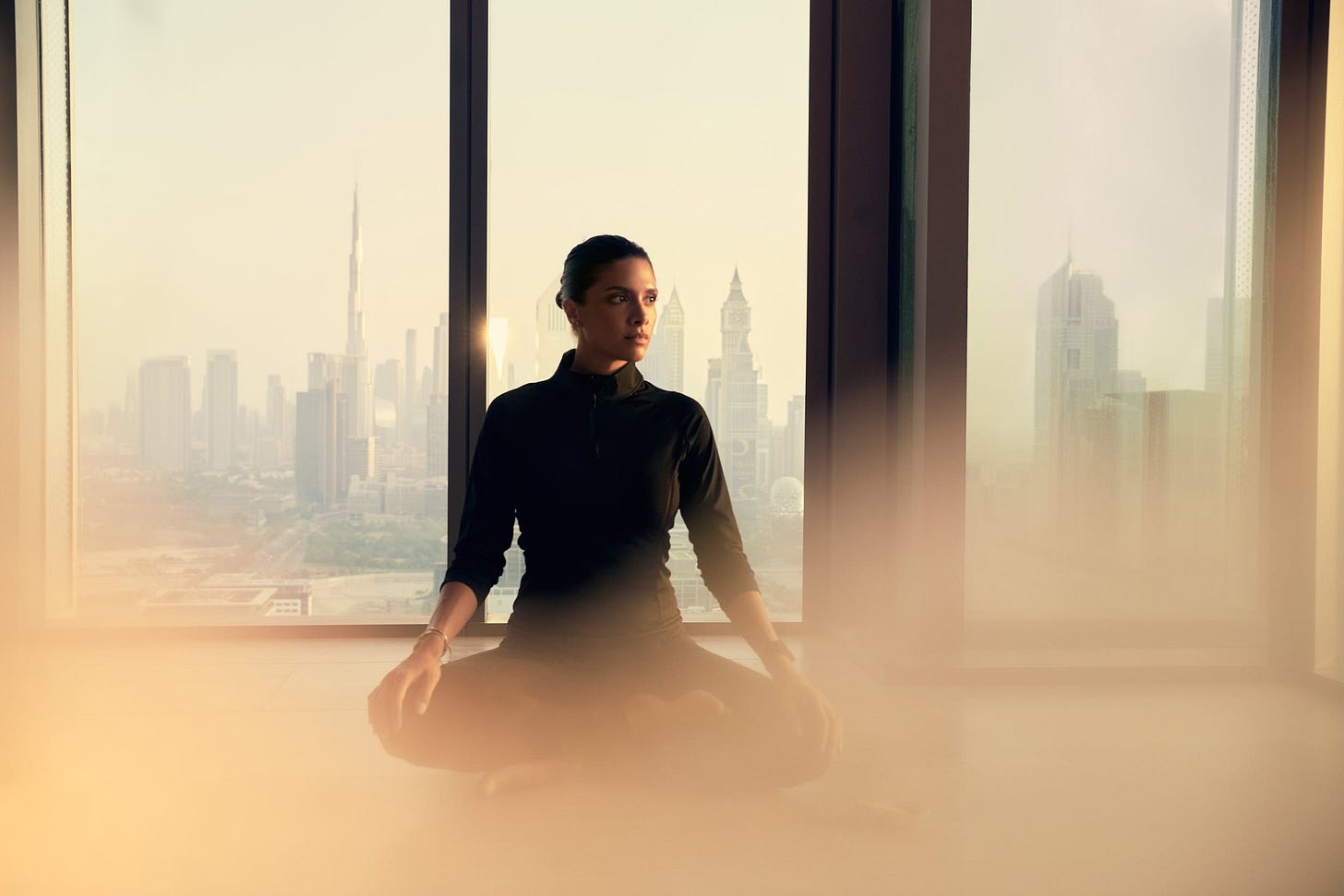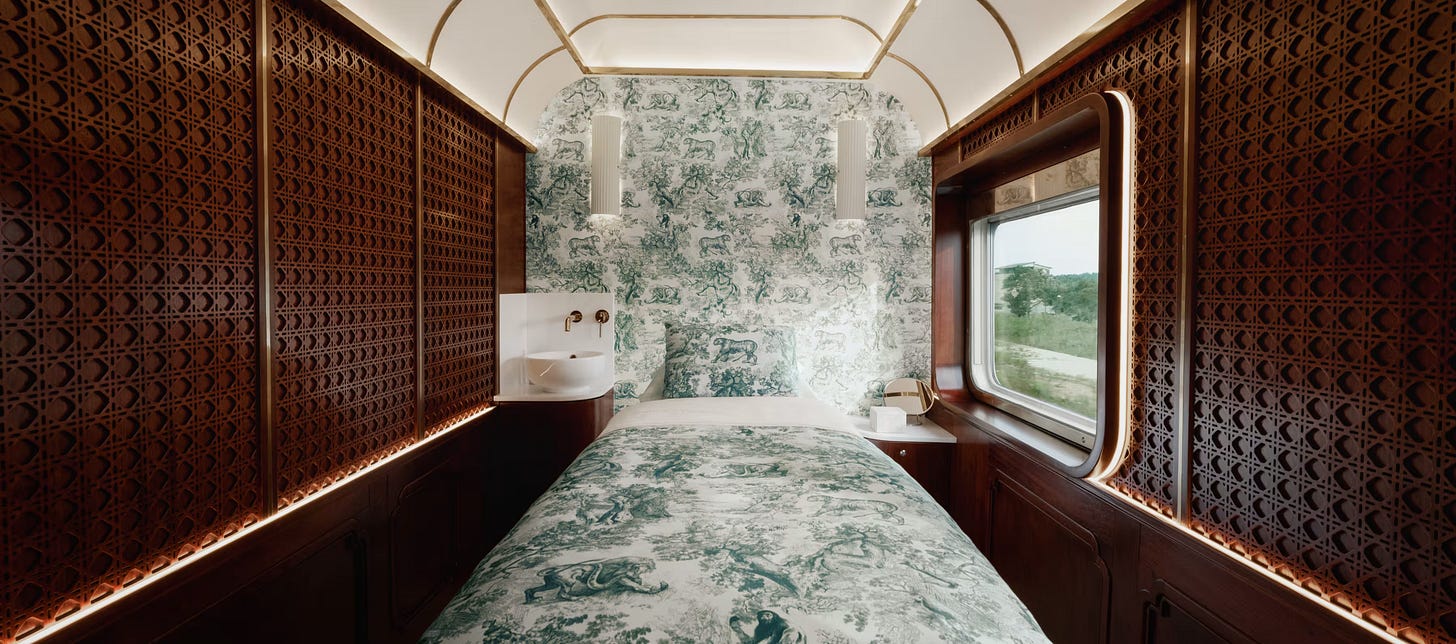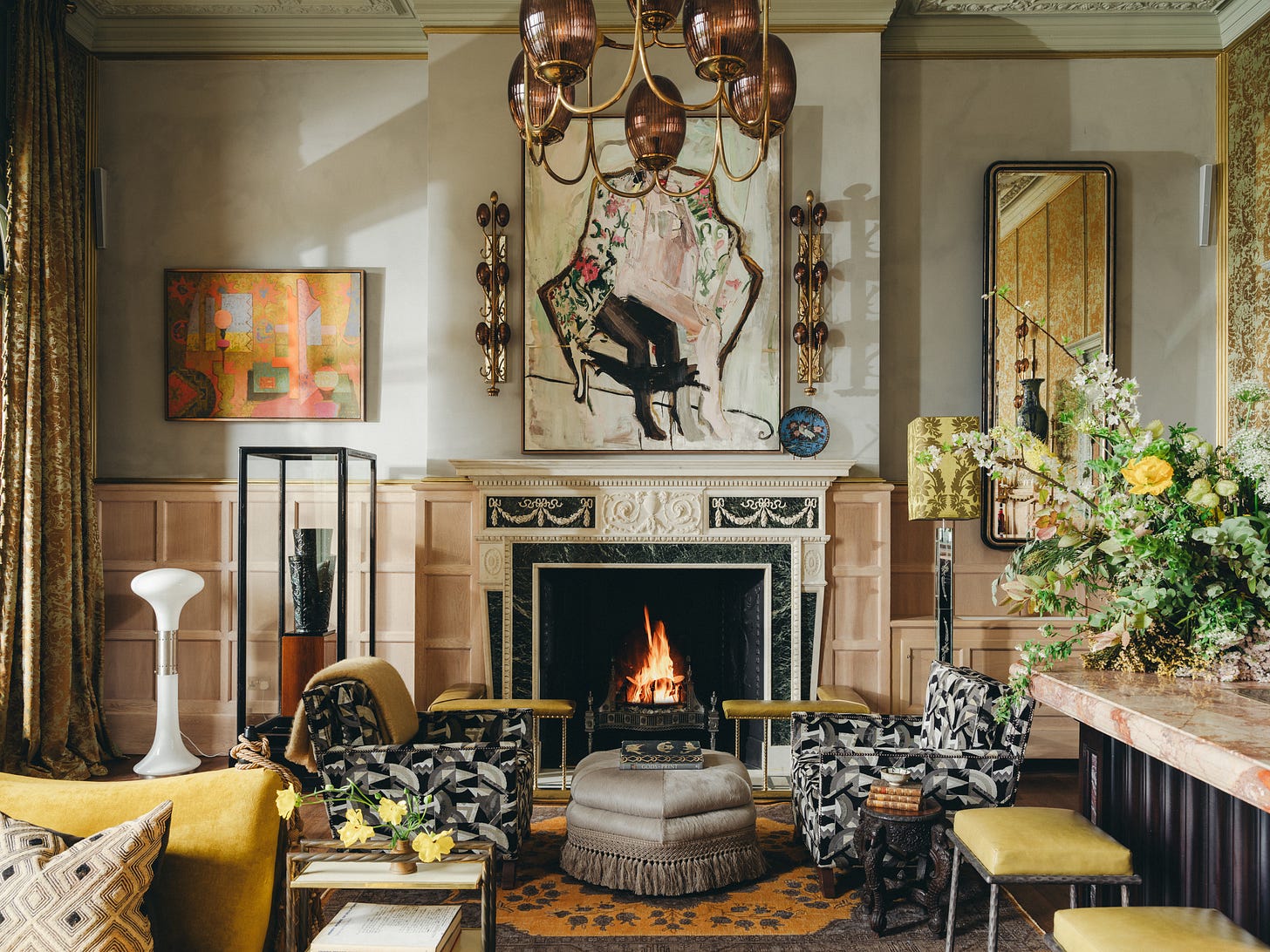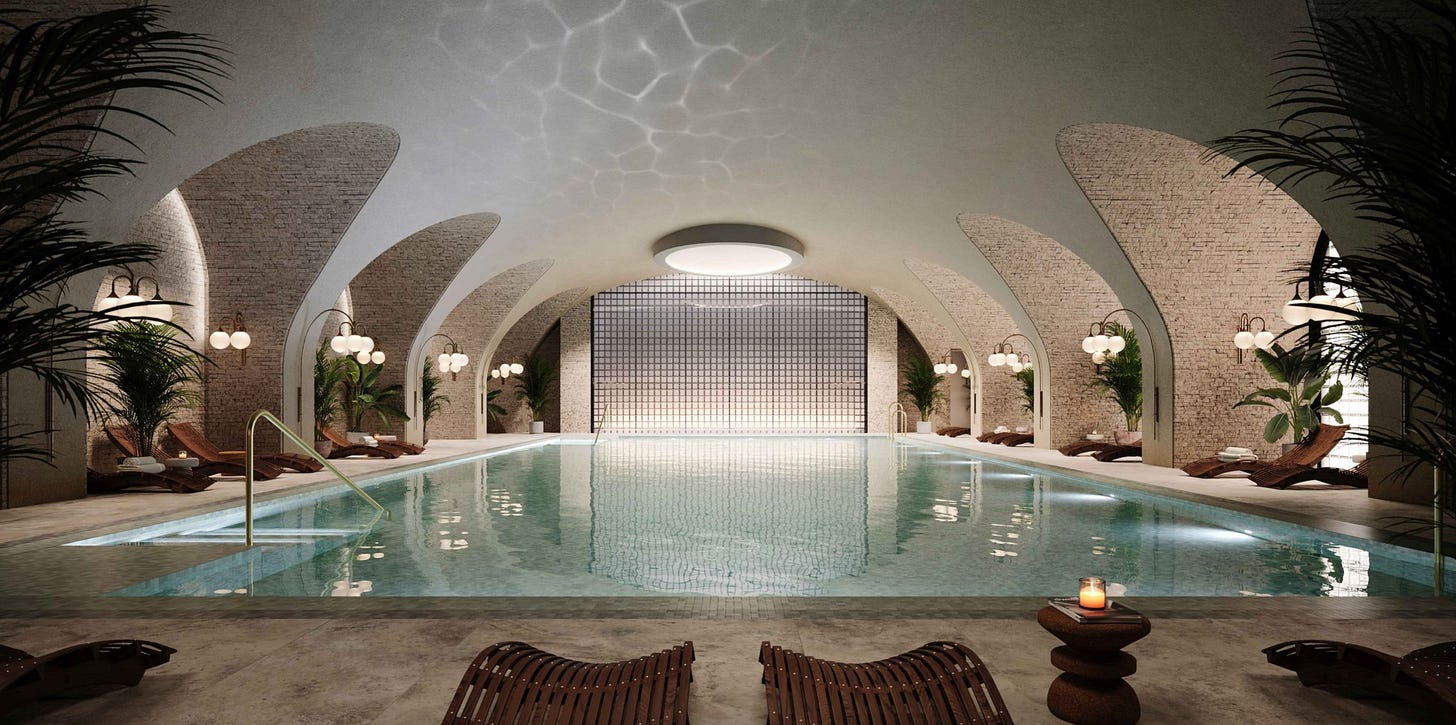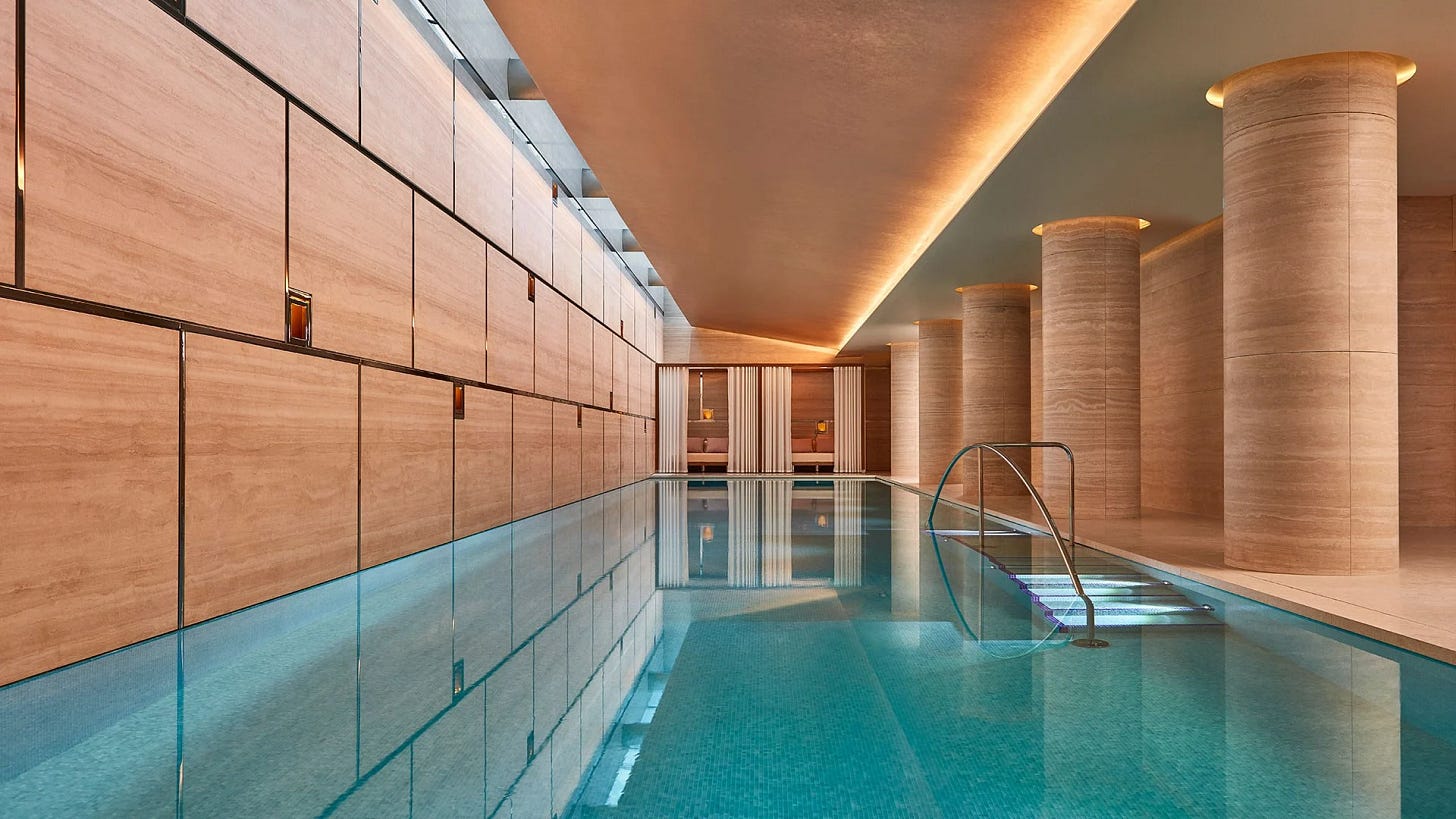‘Transformative luxury’ and the rise of the wellness hotel
The growth of the ‘transformation economy’ is a huge opportunity for luxury hospitality. Here’s how brands can unlock its potential
Welcome to TOMORROW WILL ARRIVE, a platform for cultural critique and future thinking; offering perspectives on luxury, brand strategy, identity and design. Created by BIRCH, we are a London-based creative studio, founded in 2009. You can reach us here, or join our Subscriber chat here.
This article first appeared as a guest contribution to The Sociology of Business, you can find it here.
The concept of ‘the experience economy’ was coined by B. Joseph Pine II and James H. Gilmore in their landmark 1998 Harvard Business Review article.
In their 1999 book of the same title, they argued that the experience economy was a response to “the progression of economic value”, as consumer motivations shifted from owning high-status things, to valuing prestigious experiences.
At BIRCH, we believe this “progression” is still playing out. Today, as we see things, there are two kinds of luxury:
1. Luxury as a vehicle for self-expression
2. Luxury that enables self-actualisation
The former refers to luxury consumer goods. The cars, watches, fashion and lifestyle accoutrements that signal social status, affluence, taste, membership of certain societal groups, etc.
The latter is a new expression of the experience economy, which Joseph Pine now calls the “transformation economy”; those luxury experiences, services and communities that enable consumers to meet their personal aspirations.
And, if luxury consumer goods spending is slowing down – according to McKinsey’s latest reporting and recent numbers from groups like LVMH and Kering – spending on luxury wellness, longevity and self-care is rising.
The Global Wellness Institute estimates the wellness sector is worth £5.1 trillion globally, and is set to grow by 7.3 per cent annually to 2028. Wellness real estate is one of its fastest growing sub-sectors, as is wellness tourism.
In this landscape, the scope for high-end hospitality brands to deliver an exceptional ‘transformative luxury’ experience by embracing wellness is huge.
But, to get this right, the sector needs to adapt to changing consumer expectations. The concept of the buzzy, party-going, food-and-drink-heavy “lifestyle hotel” first pioneered by Morgans Hotel Group in the 1980s is finally on the wane, while the concept of the high-tech, health-driven “wellness hotel” is in ascendancy.
The ‘transformative luxury’ hospitality playbook
In our own work with the hospitality sector, we’ve identified four consumer shifts that brands need to respond to, if they want to offer a transformative luxury proposition that will resonate with affluent consumers. These are:
1. Wellness as the new ‘F&B’
For decades, hospitality has leant into indulgent, multi-faceted food and beverage offerings; with multiple dining concepts or ‘destination restaurants’ as calling cards. Think London’s ‘The Ned’ with its 320,000 sq ft dining hall, or mega-hotel Atlantis The Royal in Dubai, with its 17 restaurants. Brands like The Standard have built themselves on ‘vibey’ dining and party-bar guest experiences.
Now, though, these concepts feel increasingly predictable. Where hospitality brands can break new ground is to offer an unparalleled wellness experience. Critically, this is about more than bolting a fancy gym onto some hotel rooms. It’s about destinations that live and breathe wellness – with a 360-degree proposition – the more specialised, the better.
2. Customisation is critical
Transformative luxury calls for brands “to guide consumers to achieve their aspirations”, so experiences that can be personalised are key to long-term success. Consumers want to be able to shape a hospitality experience into something that feels unique to them – and which is therefore uniquely rewarding.
Brands need to give guests the scope to design their own stays by providing the breadth of amenities and services to meet guests’ individual health, wellbeing or fitness goals. Especially in unexpected and novel ways. Some brands are thinking smart here (Belmond has gone as far as to install a spa carriage in several of its ultra-luxury trains, for example) but the industry has further to go.
3. Membership models deepen engagement
The smartest hotel operators are blending a members’ club proposition into their guest experience. Destinations like Estelle Manor in the UK’s Cotswolds, for example, prioritises members – who get access to unique spaces and services that conventional hotel guests can’t access. The perceived exclusivity of membership increases desirability, and having a local membership base adds buzz, as hotel guests mingle with member communities.
Maybourne’s The Emory is another example of how to get this right. Located in London’s Knightsbridge, the hotel’s centrepiece is Surrenne, a members-only wellness clinic-meets-spa, with specialist treatments for affluent consumers. These include a hyperbaric chamber for oxygen therapy and the UK’s first fitness studio from fitness pioneer Tracy Anderson. Hotel guests are the only non-members who can access Surrenne for the duration of their stay.
4. Design for longer stays and branded residences
Branded residences (private homes serviced by luxury hotel groups) are one of the property industry’s fastest growing sub-sectors. According to Savills, the number of global branded residence schemes has grown by 160 per cent over the past decade, with more than 600 new branded developments coming to market by 2030. Affluent consumers want the comforts of home, with the convenience and service that high-end hotels offer to their guests.
Many leading hotel brands have leant into branded residential. But, brands also have an opportunity to design hotel environments that encourage longer stays; like The Emory leaning into a handful of palatial suites, over dozens of conventional-sized guest rooms.
And, things get really interesting when operators connect branded residences to a hotel’s wellness facilities.
A new Six Senses hotel is opening in The Whiteley development in London’s Bayswater this autumn, complete with branded residences. Reportedly, residents will have preferential access to the Six Senses concierge, spa and wellness facilities – a perk that many prospective buyers will doubtless value.
SIRO Hotels – a blueprint for transformative luxury?
The latest brand vertical for Kerzner International, SIRO Hotels has done a thorough job of responding to many of these consumer trends.
Conceived as “the ultimate active lifestyle hotel”, Kerzner set out to create a new, scaleable brand that would offer a compelling ‘wellness tourism’ experience. BIRCH worked with Kerzner to launch the brand, and we’ve followed SIRO’s progress closely since.
Five pillars make up SIRO’s brand model, informing every element of the guest experience. These are fitness, recovery, nutrition, sleep and mindfulness. Each contributes to the brand’s promise: “live without compromise”.
With wellness at the brand’s core, SIRO invests in exceptional facilities. SIRO’s first property, at One Za’abeel in Dubai benefits from a 1,000 sq m gym floor, three class exercise studios, and a ‘Recovery Lab’ with specialist therapies including EMS, cryotherapy and NAD IV therapy.
This level of choice ensures that guests can tailor activities to suit their individual fitness and wellbeing goals – whether seasoned athletes or lifestyle changers – with support from a suite of in-house specialists, who range from trainers to nutritionists.
In fact, customisation options are present at all levels of the guest experience; from dozens of fitness and mindfulness classes each week, to SIRO’s ‘modular dining’ concept, whereby guests can tailor their meals to suit their diet plan or training protocol.
With such a focus on wellness amenities, it makes sense to sell club memberships too, so hotel guests train alongside local community members. The two are brought together through regular events and brand partnerships – like SIRO’s sponsorship of the Dubai Fitness Challenge.
Longer stays are encouraged through specialist packages that support guests to work on particular elements of their fitness and health, and SIRO’s first branded residences will open alongside their forthcoming hotel in Porto Montenegro, this summer.
The brand is playing out the playbook – as we see it – pretty neatly. It will be interesting to follow SIRO as the brand matures. Especially as it expands from urban Dubai to more remote or retreat-led locations. It’s early days, but SIRO’s combination of wellness, customisation and community makes it a brand to watch.
The ‘transformative luxury’ opportunity
In the transformation economy, consumer demands on high-end hospitality are perhaps greater, and more specific, than they ever have been. But, the opportunities are greater too.
In a world where ‘health is the new wealth’ and luxury is increasingly becoming a vehicle for self-actualisation, hospitality has a critical role to play.
Brands who invest in an exceptional, customisable wellness proposition stand to make significant gains in the coming years. Those who hold to outmoded “lifestyle hotel” models will lose.




